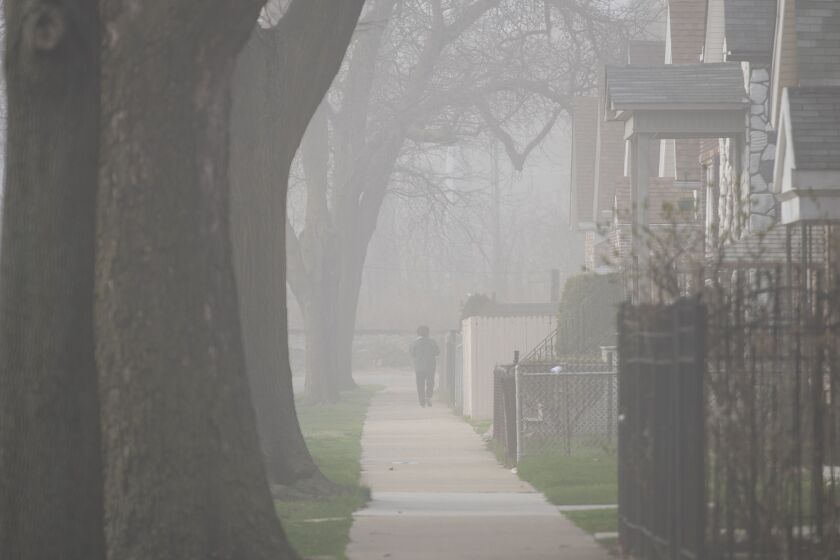Mayor Lori Lightfoot acknowledged Monday her administration “should have done a better job” of communicating with Little Village residents but stood her ground on the need for yet another demolition on the site of a shuttered coal-fired power plant.
In fact, the mayor argued the turbine building is in such imminent danger of collapsing, the northbound lanes of Pulaski Road are being shut down to protect passing motorists.
“The building that we’re talking about — not the large one — is a risk. It is unsafe. It is structurally compromised,” Lightfoot said, adding that she also worries that while the city and community keep talking, something could happen on site that poses “a danger to the workers that are there.”
Also, “it’s right up against Pulaski” Road, the mayor said. “So we’re taking the steps to shut down the northbound lanes, which are at the eastern edge of the site, for safety. This is not a nicety. This is a building and buildings that are structurally unsound.”
Lightfoot said she went out to the site Friday night to “walk the grounds again” and see the perilous conditions with her own eyes.
“It’s not safe for anybody. So while we absolutely must continue to educate residents and demonstrate to them — visually as well as orally — what the dangers are, those buildings must come down. We’re gonna do it step by step. But we have to bring them down,” she said, refusing to say when the demolition would take place.
Last Thursday, the Lightfoot administration gave the go-ahead for a second demolition on the site of the former power plant, infuriating Little Village residents still reeling from the disastrous implosion of a 95-year-old smokestack on the site on April 11.
But a few hours later, the mayor put the turbine building demolition on hold for what she claimed was “the next several days” after a group of protestors gathered outside her Logan Square home. On Monday, Lightfoot acknowledged picketing outside her home “goes with the territory.”
The mayor also talked openly about the need to communicate more clearly and candidly to a Little Village community that has borne the brunt of the coronavirus and was victimized by what activists call “environmental racism” long before the pandemic.
“This is a community that really has felt disrespected, lack of resources, in the middle of a very difficult and challenging environmental problem for decades. We have to recognize that. I have to recognize it — and I do,” Lightfoot said.
“We’re not gonna be able to erase decades of feeling in one moment. That’s not gonna be possible. But we do have to constantly look for other ways in which we can reach out, help educate and listen to what people in those communities are saying. And certainly, we should have done a better job last week. We’re trying to address that shortcoming now.”
On April 11, armed with a city demolition permit that local Ald. Mike Rodriguez (22nd) tried to stop, a now-fired sub-contractor for Hilco Redevelopment Partners demolished the smokestack without the promised safety measures.
That caused a giant plume of dust to rain down on the community. Homes, vehicles, streets and sidewalks were left filthy.
Lightfoot blamed Hilco, slapped the company with $68,000 in fines and vowed to overhaul a flawed city regulatory system that allowed it to happen.
After the demolition, the turbine building was left “half demolished and exposed to the weather elements, including wind and rain, which rendered an already unsafe building an immediate threat to public health and safety,” according to a structural analysis prepared by the city’s Department of Buildings and obtained by the Sun-Times.
With photographs to back its assertions, the report concluded that:
• Steel columns are “exposed and unbraced in both dimensions.”
• The adjacent building structure that “originally provided lateral support to the steel columns” has been removed.
• Large areas of exterior brick are “unsupported and remain in place solely due to mortar adhesion” and the brick “could collapse due to its own weight and wind pressure.”
• Structural steel roof trusses are damaged and “deformation of trusses and cross bracing could get worse.”
• The exposed steel makes the site an attractive nuisance to scrappers who regularly trespass on the site.
“In the interest of public safety, the turbine structure is unsound and needs to be removed immediately,” the report states.
“It is expected that the demolition of the turbine structure will take approximately one-to-two days, weather permitting.”






